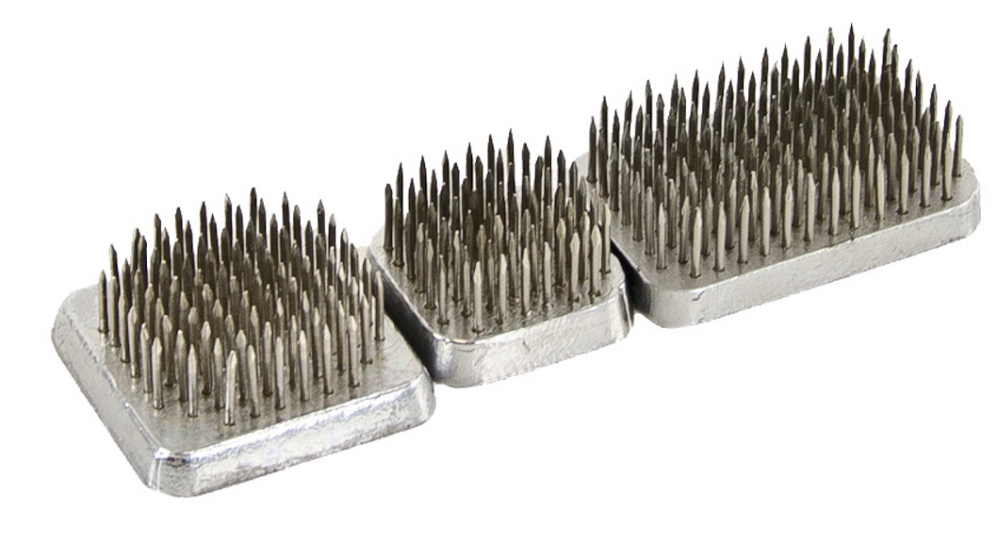In honor of the annual Portland Flower Show, which opens Wednesday with a Gala & Awards Ceremony, we bring you flower frogs. If you know what these are, you may be dating yourself – one local florist I spoke with (who doesn’t use them) called them “vintage” and “old-fashioned.” In our book, though, that’s practically a hard sell. If switchel, canning and horse-powered farming can all make a comeback, then so too can flower frogs, the metal or pottery doodads (often spiky, sometimes criss-crossed or pocked with holes) that sit in the bottom of a vase to hold flowers in place for arrangements. Or rather, used to sit, say in your mother’s or grandmother’s day. These days, many florists use foam instead, which makes flower arranging easier and quicker.
So what’s the problem? Foam is actually plastic: It’s not biodegradable, hence not compostable. It’s not reusable, either, and some say it’s carcinogenic. “Our goal is to not use floral foam in our designs,” said Stacy Brenner, who owns Broadturn Farm in Scarborough with her husband John Bliss. The couple has a farm stand, a CSA and a flower business.
“My goal is to have a material I can reuse – that’s the optimal, and secondly one I can compost,” she said. “These (flower frogs) are metal. They are totally reusable. You can totally buy them. They are totally still made. They are totally still used by florists who aren’t interested in using foam.” Because it’s trickier to use them – “You have to get used to building in frogs,” Brenner said – she advised that when making an arrangement, you place heavy stems first (say flowering crab apple branches), then foliage, and finally blooms. There’s a bonus: “I think they are interesting and beautiful. The antiques ones are a lot of fun to have around. They give me pleasure.” Brenner paused a moment to laugh at herself, then added, “I like eating chocolate more than using flower frogs, but I like using flower frogs better than floral foam.”
Send questions/comments to the editors.



